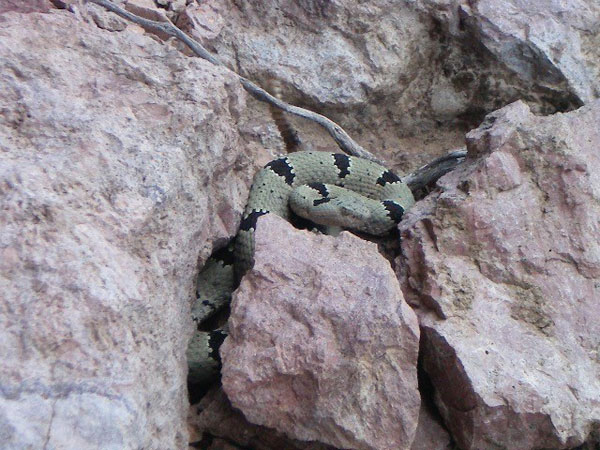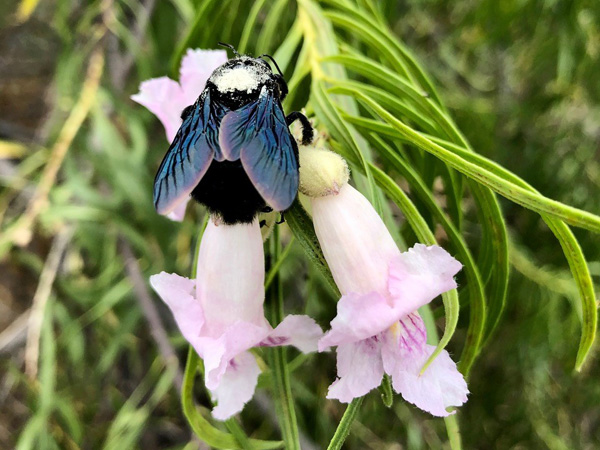Endangered Wildlife
Few people would use the term “endangered wildlife” because most flora and fauna are not classified by various agencies or states as formally endangered or listed as “at risk” species. While we have introduced several listed species, there is good reason to think of wildlife more generally as endangered because we are currently undergoing a mass species extinction crisis, 10,000 times worse than the natural rate of species extinction. Historically, maybe one amphibian species would go extinct every year or so, but now that group’s extinction rate has been estimated to be as much as forty-five thousand times higher than the background rate.
More than 18,000 species are known to be at risk of extinction. As bad is this sounds, current research concludes that earlier extinction estimates for presently occurring losses appear to have seriously underestimated the number of species that we’re losing. We may have already lost 130,000 species, or a staggering seven percent of the world’s total biodiversity. Elizabeth Kolbert’s 2014 Pulitzer Prize winning book, The Sixth Extinction: An Unnatural History, maintains that 20 to 50% of all living species on Earth will be extinct by the end of the century. A 2014 study at Duke University in Durham, North Carolina, published in Conservation Biology, found that humans are driving species extinction at approximately 1,000 times the natural rate — that is, the extinction rate before humans arrived on the planet. Focusing on the “death rate” of extinction rather than the number of species lost, the study concluded that species are disappearing about 10 times faster than biologists believed, adding merit to the view that the world is on the brink of a sixth great extinction and that scientists, as a group, are habitually or even recklessly overcautious. Alfred Russel Wallace and Charles Darwin’s natural selection is the mechanism by which species adapt to changes in their environments, but the speed at which the climate is currently changing will prevent many, if not most, species from successfully adapting.
The early 2017 listing of the rusty patched bumblebee — important for pollinating crops such as tomatoes, cranberries and peppers — as an endangered species is one of the more recent cases on point. Since the late 1990s, the population of the species has plummeted 87 percent, causing U.S. Fish and Wildlife Service Midwest Regional Director Tom Melius to refer to the listing as a “race against extinction.” The risk for humans is fairly simple: no bees, no food.
The extent of this ongoing mass extinction has gone essentially unnoticed because most of the species are not big, noticeable creatures such as rhinos and tigers. They are tiny insects and other invertebrates that don’t get much attention. These species tend to have very small ranges with specific habitat needs and aren’t often well studied.
Mammals and birds provide the most robust data, because the status of almost all has been assessed. Invertebrates constitute over 99% of species diversity, but the status of only a tiny fraction has been assessed, thereby dramatically underestimating overall levels of extinction. Using data on terrestrial invertebrates… we may have already lost 7% of the species on Earth and that the biodiversity crisis is real.
— Tom Melius, U.S. Fish and Wildlife Service, Midwest Regional Director
Scientists and citizen scientists have scoured the ranch landscape; their efforts have resulted in the following inventory species lists – click on a list link to open a PDF: Birds, Amphibians, Reptiles & Fish, Mammals, Butterflies, Moths, Grasses, and Plants. In addition to Euphorbia rayturneri, the Pitchfork Ranch has six other species that are formally listed as one of a variety of threatened and endangered (T&E) classifications by various agencies.

Mule deer at a water catchment installed by the Bureau of Land Management (BLM)

Ring-necked snake

Swainson’s hawk
 The Chiricahua Leopard Frog
The Chiricahua Leopard Frog
The Chiricahua leopard frog was introduced on the ranch in 2006 as part of the federal program to protect this endangered species, and it appears to have taken hold here, because we saw frogs as recently as February 2020.
 The Gila Topminnow
The Gila Topminnow
The Gila topminnow was introduced here in 2007 and is doing well. This photograph was taken when the animals were removed from a drying pool downstream, carried in a Ziploc bag and returned up channel to the live water. The beetle in the lower right hand corner is a Sunburst diving beetle, the first animal in the world known to have binocular vision.
 The Aplomado Falcon
The Aplomado Falcon
The Aplomado falcon was reintroduced on the ranch by the Peregrine Fund, although the effort was abandoned after three years because the habitat is no longer capable of supporting this bird that was plentiful here for thousands of years.
 Wright’s Marsh Thistle
Wright’s Marsh Thistle
Wright’s marsh thistle was reintroduced by Bob Sivinski, former botanist for the New Mexico Forestry Division, and is considered a candidate for the endangered species list. A WildEarth Guardians study found that the plant has a high chance of grappling with the risk of extinction, and the Guardians filed a petition in 2008 for Wright’s marsh thistle to be added to the endangered species list.
 The Viceroy butterfly
The Viceroy butterfly
Listed for protection in New Mexico, the Viceroy is a cousin of the Monarch and Queen butterflies, mimicking the Monarch that is poisonous to birds. When we initially began the introduction of listed species, we had a lepidopterist from the New Mexico State University visit to determine if the habitat was suitable for their introduction. He immediately noted that the Viceroy was already present because of the rich Willow tree habitat.
 Coatimundi
Coatimundi
The Coatimundi is primarily a Mexican and Central American animal that also lives in southwestern Texas and southern New Mexico. The coati is protected in Texas and is present on the ranch.

Horned Toad

Western diamondback rattlesnake (Coon tail)

Coatimundi with Stripped Skunk sharing cat food

Pronghorn - this photograph was taken near the ranch by Jack Barnitz of the BLM on the way to visit.

Nathan McIntyre photographed of this herd of 48-mule deer.

Western box turtle

Rock Rattler

Carpenter Bee

Peccary

Gray fox, photo taken in our front yard.

Skink

Chiricahua leopard frog egg mass

Bobcat, taken by Elroy Limmer in his back yard in Silver City. This secretive cat is also on the Pitchfork, although we have seen one only three times in 17 years, as with lions, whose tracks and scatt are everywhere, but we’ve never seen one.

The ranch has Pronghorn (Antelope) down in the flats.

Coyote, photograph taken by the motion camera at the rain catchment installed by the BLM on the southern part of the ranch

There are 300 species spread across 8 families of fairy shrimp with their capacity to remain alive up to a century without rain. This “diapause” is an important aspect of the fairy shrimp’s life cycle, a state of biological dormancy where growth and metabolism are arrested until they get wet, wake up, feed, reproduce and ready themselves for another sleep. We first encountered thousands of these small animals in a school that was maybe 10-12 feet long, 8” in diameter, like a giant snake in a dirt tank on the ranch. Two friends who were with us, scientists Carl and Jane Bock, and they disabused us of the thought that we had discovered a Chihuahuan Desert variant of the Lock Ness Monster.
This water catchment was installed by the Bureau of Land Management on BLM land on a dry portion of the ranch. Rain water drains from the yellow “roof” into two 1,800-gallon tanks with small drinker openings shown in the photograph of the three drinking mule deer above. The catchment is fenced to keep the cattle out, maintaining water for wildlife throughout the year.



